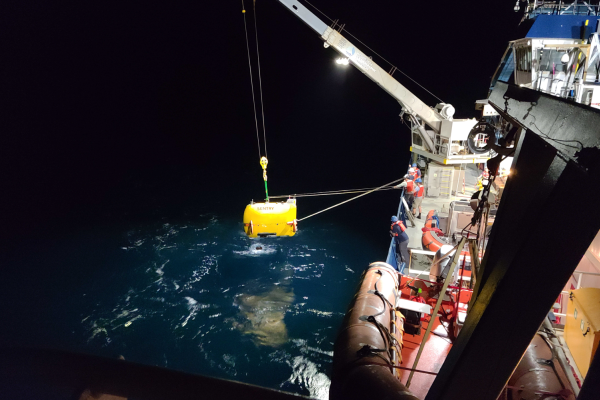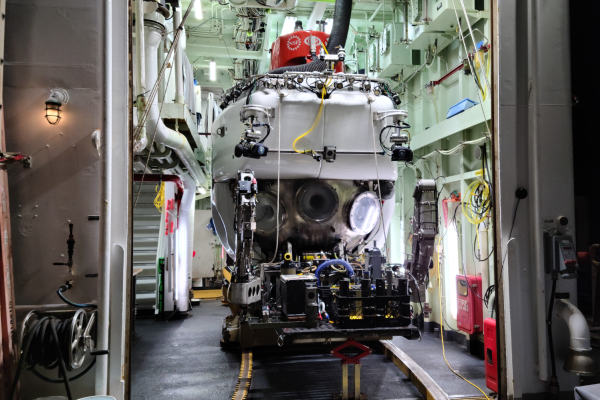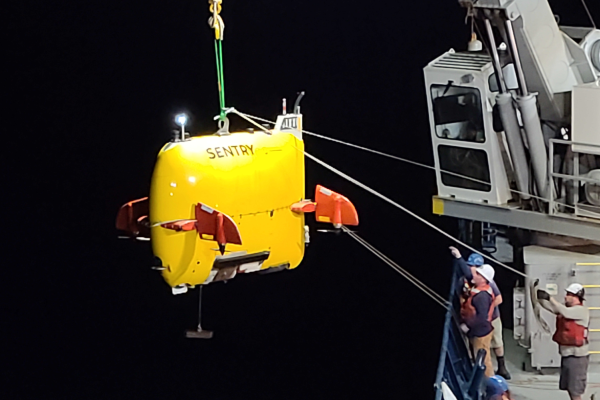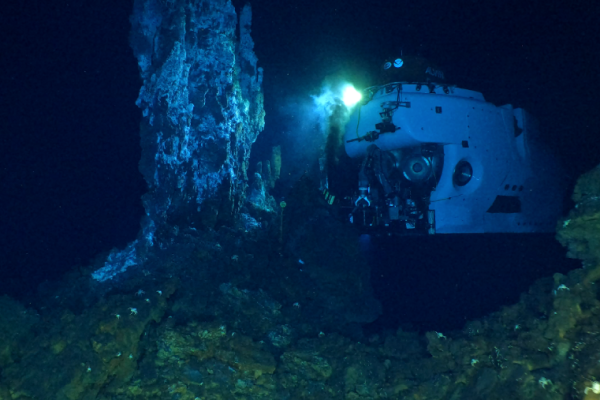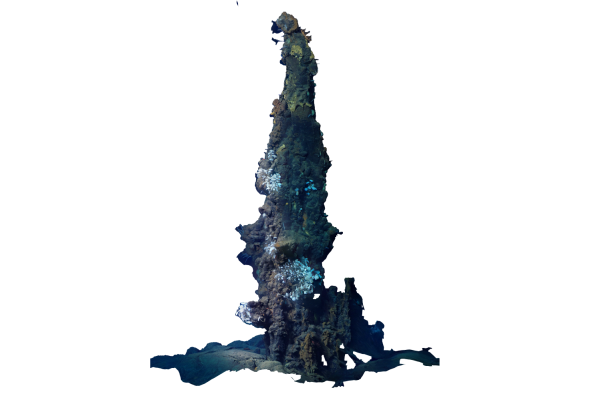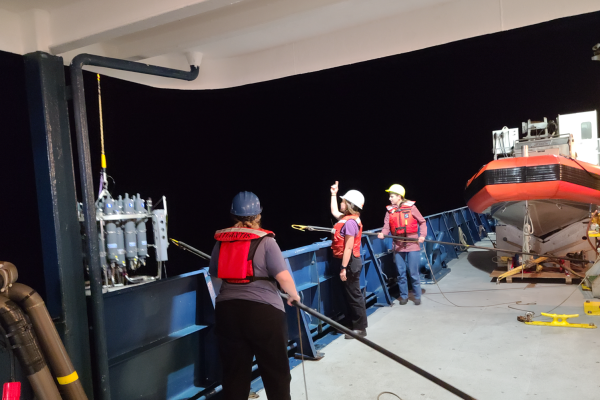STORY: A New Depth to Hands-On Learning: Oliners & WHOI Embark on 4-Week Deep-Sea Research Expedition
In January, Victoria Preston ’16 and Solomiia Kachur ’25 boarded the R/V Atlantis and departed from San Diego, California, where they traveled south roughly 1,800 miles to a segment of the East Pacific Rise.
For the next month, Preston and Kachur were part of a 60-person team of researchers and crew members studying deep-sea hydrothermal vents and volcanoes using autonomous underwater vehicles (AUVs).
Led by Jill McDermott of Lehigh University and Daniel Fornari of the Woods Hole Oceanographic Institution (WHOI), the expedition was funded by the National Science Foundation (NSF) and was a large international collaboration with scientists and engineers from UCSD, Lehigh University, WHOI, Geo-Oceans, CNRS, Olin and others. The expedition in January was the fourth of its series, and the third that Preston participated in.
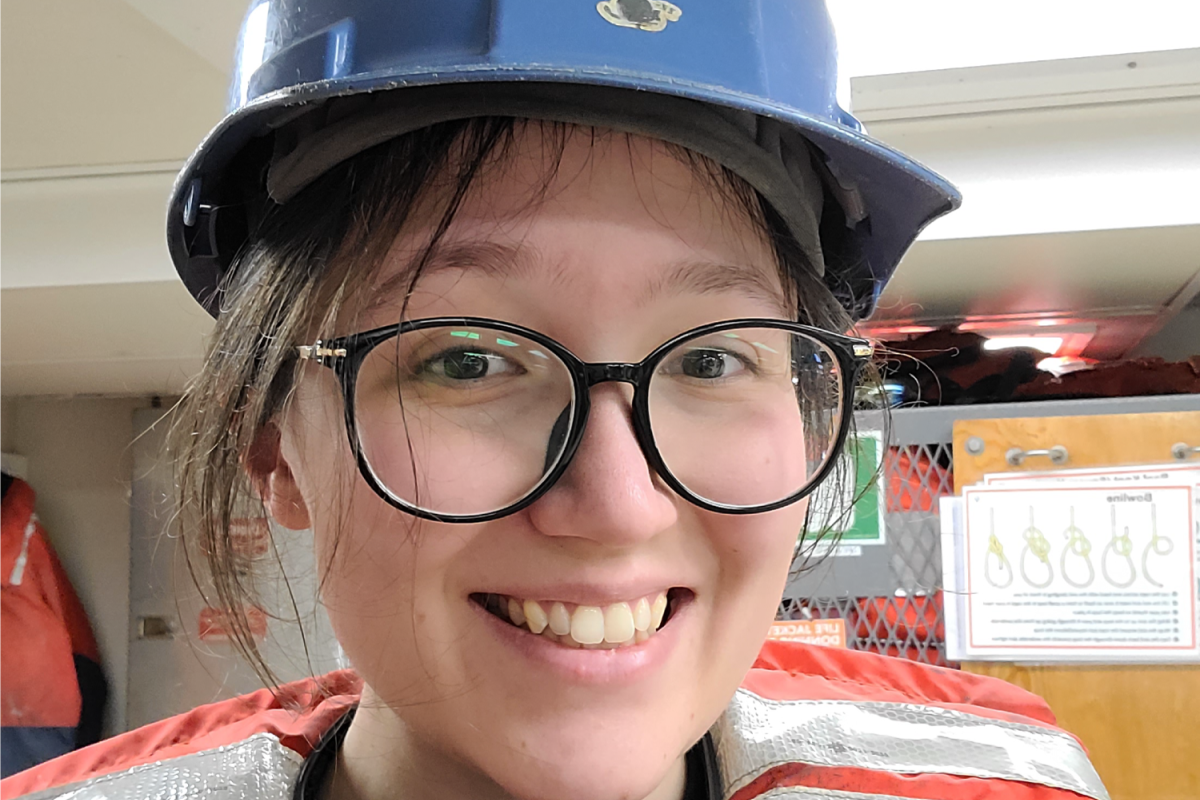
Understanding where you live is like understanding yourself
Being able to go to a place as a natural laboratory for understanding volcanic eruptions allows us to do better research in places that are actually impacting people more directly.
Victoria Preston
Assistant Professor of Engineering and Field Roboticist
View Victoria's BioSeveral robots were used on the expedition, including the HOV Alvin, the AUV Sentry, and winched assets. According to WHOI, the HOV Alvin is a 3-person research submersible capable of reaching 6500 meters depth and of supporting custom sensors and samplers. The AUV Sentry can receive precise instructions on how to map the water column and the seafloor at the same time, allowing the researchers to track plumes, locate them and map incredibly large areas. The winched assets are designed to profile the vertical part of the water column. Operators can move and drag the winched assets around, which helps obtain a horizontal picture.
“The fluid that's coming out is almost 400 degrees Celsius, and the water at the bottom of the ocean is effectively zero degrees Celsius. That's an amazing temperature gradient,” said Preston. “The more that we push technology to go to these extreme environments, the more that also allows us to have advanced technology that impacts our day-to-day lives. So, just the innovation needed to do the science from an engineering perspective is good for everybody.”
Earlier this year, Preston introduced the Climate Robotics and Expeditionary Science Technology (CREST) Group to further technical development in applied engineering through a robotics lens while also performing observational science in real-world settings. When Preston was informed that there was an extra spot available on the ship for January’s expedition, the idea of inviting a student came to mind. That is when she reached out to Kachur, who enthusiastically accepted the rare opportunity.
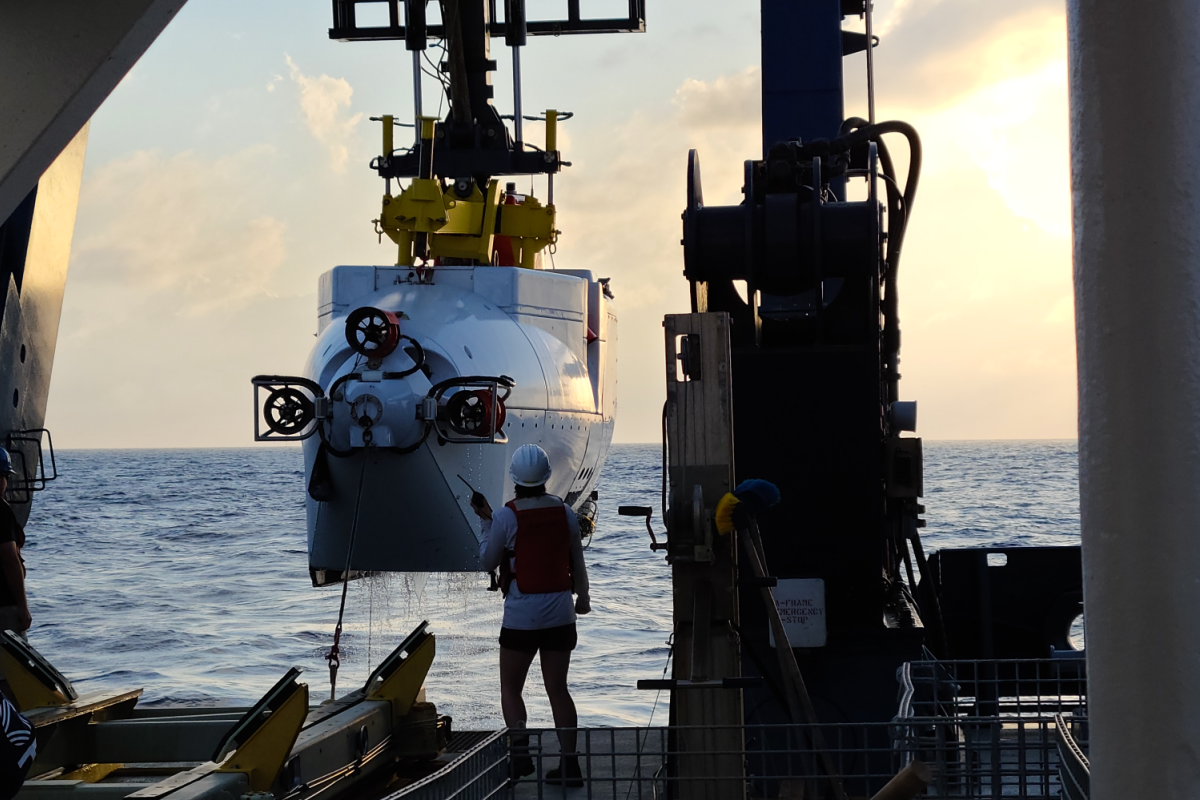
HOV Alvin is a manned submersible that can carry three people, 2 scientists and a pilot, to the seafloor. The humans occupy the large titanium sphere which can be seen at the center of the image. In front of the sphere, the "science basket" is mounted, which carries all of the science equipment to be deployed on the seafloor to collect samples. To operate all that equipment, two manipulator arms are used, which flank the basket on either side. On the brow of Alvin are mounted many cameras and lights to record everything going on while on a dive.
“Being able to work on something, build it and then test it in real life and see it work seems like a very unique opportunity,” said Kachur, an electrical and computer engineering (ECE) student. Her interest in robotics first emerged in her freshman year when she joined the Olin Robotics Lab. “I think it's very valuable, because as an engineer, I'm never going to be working on isolated problems.”
Leading up to the expedition, Kachur spent a considerable amount of time preparing for the month-long voyage. She reviewed the materials from the previous expeditions, which were each hundreds of pages long, and she spent time familiarizing herself with the locations, the environment and the variables of the hydrothermal vents.
While on the expedition, Kachur’s skills from her course, Image Processing, Reconstruction and Analysis with Chhavi Goenka, became an asset to the team. The first batch of photos that were obtained from the AUV Sentry came out too dark, and the elements within the image were not visible. To address this, Kachur ran the images through an algorithm she created. With some adjustments, the images became clearer, allowing the researchers to see key details in the photos. Additionally, Kachur also developed algorithms that would locate photo and video data.
“Olin gives you the hands-on experience that you can go and actually apply and the confidence that you can actually solve real problems,” said Kachur. “You could easily try to stick to your task and fix it, but I feel like Olin students love to take initiative on different things, and this environment nurtured the kind of urge to do that.”

Good science starts with good documentation practices; lab work here includes syncing up all of our documentation about instrument deployments and recoveries, and bookkeeping all the data for later analysis.
“They're not just working with me, they are working with professionals in their field and with these scientists who are not in their field in an incredible collaborative environment. That is genuine and authentic,” said Preston. “Having a student make a tangible difference as a member of a team in the real world is awesome.”
The work and research that was performed on the expedition is critical to helping scientists understand the ocean and its impacts on our environment. Preston notes that the ocean’s chemistry, which is dictated by different sources of nutrients and energy cycling through it, is an important part of what makes Earth work.
“Hydrothermal vents are one of those sources of stuff that sets the global ocean chemistry,” said Preston. “From a big scale climate modeling perspective, understanding our sources better makes us understand our ocean, which then makes us understand our climate and planet better.”

One winched asset, the CTD rosette, needs to be prepped before sending it to the depths. In this case, that means opening up to 24 Niskin bottles on the rosette so that they can be remotely closed and collect water samples as it travels through the water column.
Since the expedition concluded in February, the site that was being studied erupted. Predicting the eruption of the site was one of the team’s science goals, and the findings were recently covered in the New York Times. Additionally, Preston was featured in WHOI’s “Titanic & Beyond: The evolution and impact of deep-sea imaging,” which can be viewed here.
With science and engineering in mind, Preston also notes how conscientiousness and empathy are also key factors for impact-centered education, and how authenticity can help foster connections between people.
“I am super excited about training engineers in my field at the intersection of environmental sciences and robotics,” said Preston. “Especially in the ocean space, I think we just need so much talent in ocean engineering, and we need people who are interdisciplinary thinkers, conscientious and motivated. I think that a great place to do that type of training is in the undergraduate world.”
